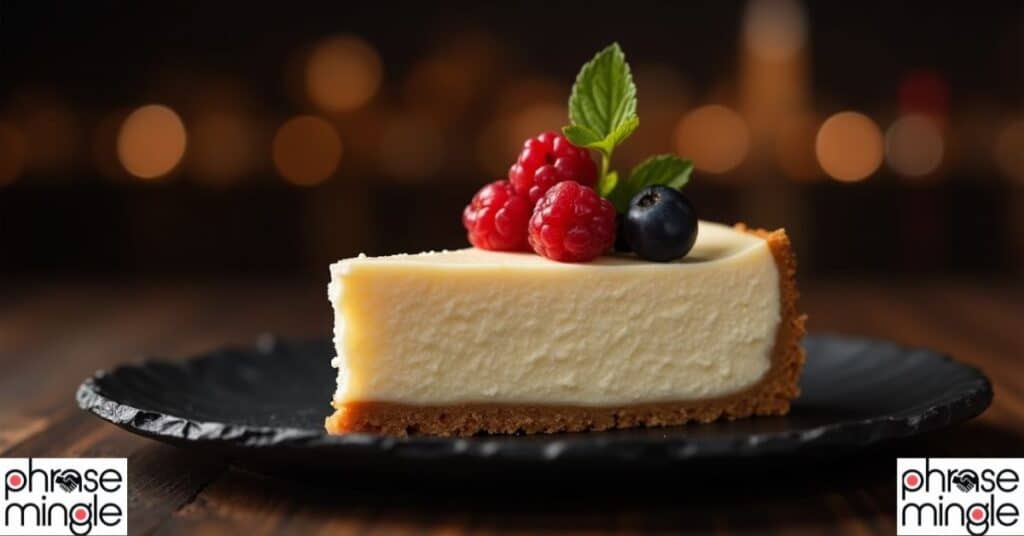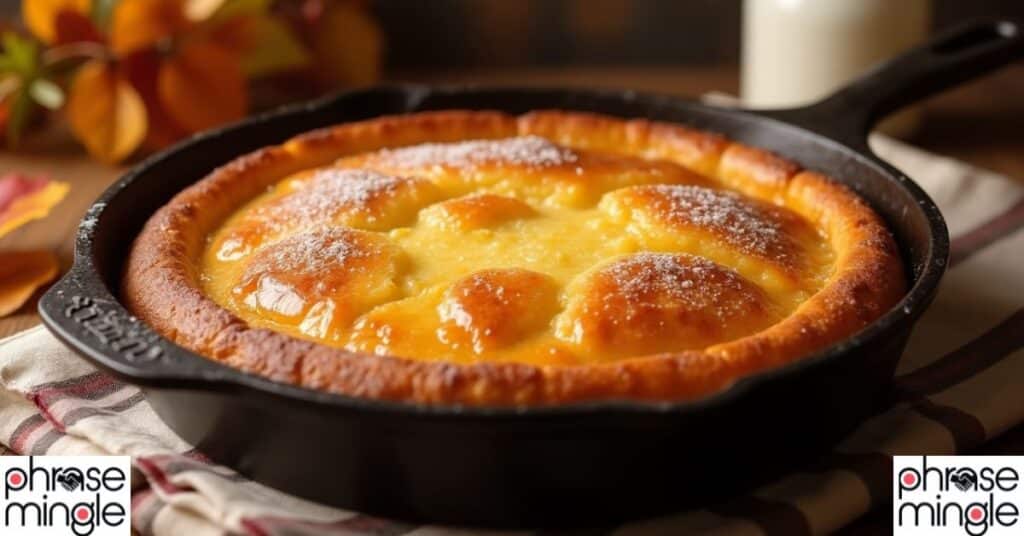Desserts that start with N offer an incredible journey through global culinary traditions from Napoleon legendary confections to your neighborhood bakery’s signature sweets. Whether your craving something from distant shores or on the hunt for the perfect no bake treat this comprehensive guide unveils 25 authentic Desserts that start with N.
You’ll discover everything from Canada’s beloved Nanaimo bars to Thailand’s refreshing shaved ice creations. Each dessert tells a story some rooted in centuries old traditions others born from modern innovation. Ready to expand your dessert vocabulary? Let’s dive into this delicious alphabet adventure.
1. Classic American & European N-Desserts
This section explores the most beloved desserts that have shaped American and European sweet traditions. These treats represent comfort, celebration and cultural heritage passed down through generations.
1.1 Iconic Bar & Layered Treats
Nanaimo Bars reign supreme among Canada’s most famous contributions to the dessert world. These three layer no bake bars originated in Nanaimo British Columbia sometime in the 1950s. The magic happens in the layers: a graham cracker and coconut base rich custard middle and glossy chocolate ganache top.
What makes Nanaimo bars special isn’t just their taste it’s their story. Local legend credits a housewife’s recipe contest entry though dozens of families claim the original. The dessert gained such popularity that Nanaimo’s mayor once challenged New York’s mayor to a Nanaimo bar versus New York cheesecake taste off.
Key Nanaimo Bar Facts:
- Origin: Nanaimo British Columbia 1950s
- Prep Time: 30 minutes + 4 hours chilling
- Shelf Life: 1 week refrigerated
- Calories: Approximately 280 per bar
The Neenish Tart represents Australia’s unique contribution to afternoon tea culture. These individual pastry shells feature the iconic half pink half chocolate icing that’s instantly recognizable across Australia and New Zealand. The tart shell holds mock cream or custard filling creating a perfect balance of textures.
Two towns claim invention rights: Melbourne and the tiny NSW town of Grong Grong. Melbourne’s claim dates to the 1920s while Grong Grong insists a railway refreshment room created the first version. Regardless of origin Neenish tarts became staples at country shows and bakeries throughout Australia.
New York Cheesecake stands as America’s most famous dessert export. Unlike lighter Philadelphia style versions New York cheesecake demands full fat cream cheese heavy cream and eggs for that signature dense texture. The dessert gained fame through iconic establishments like Lindy’s and Junior’s in Brooklyn.
The secret lies in technique: slow baking in a water bath prevents cracking while the gradual cooling process ensures perfect texture. Traditional New York cheesecake uses a graham cracker crust though some purists prefer pastry or no crust at all.
IF YOU WANT TO READ ABOUT DESSERTS THAT START WITH ‘J’ CLICK HERE
1.2 European Heritage Desserts that start with N

Napoleon Cake known as Mille feuille in France showcases the art of French pastry making. Despite popular belief this layered puff pastry dessert has no connection to Napoleon Bonaparte. The name likely derives from “Napolitain” referring to Naples or simply describes the many layers.
Creating perfect Napoleon cake requires patience. Each puff pastry layer must achieve golden crispness while maintaining structural integrity. Traditional fillings include pastry cream or custard though modern variations incorporate fruit compotes or chocolate ganaches.
Nougat represents one of France’s oldest confections with roots tracing back to ancient Rome. Montélimar became the nougat capital establishing strict quality standards in 1650. True French nougat contains specific ratios: almonds and pistachios must comprise at least 28% of the total weight.
Two main varieties exist:
- White Nougat (Nougat Blanc): Soft chewy texture with honey and egg whites
- Black Nougat (Nougat Noir): Hard brittle texture with caramelized sugar
Norman Tart celebrates Normandy’s famous apple orchards and Calvados production. This rustic French dessert layers sliced apples in buttery pastry often enhanced with Calvados apple brandy. The region’s rich dairy tradition adds heavy cream creating a custard like base that sets during baking.
Traditional preparation involves macerating apple slices in Calvados before arranging them in decorative patterns. Some versions include frangipane (almond cream) for extra richness while others stay true to the simple apple and cream combination.
2. International & Cultural Specialties
Global dessert traditions offer fascinating insights into local ingredients cooking methods and cultural celebrations. These international treats showcase how different cultures interpret sweetness and texture.
2.1 Latin American Delights
Natillas represents comfort food across Spanish speaking countries though each region adds unique touches. Spanish natillas resemble crème brûlée without the torched sugar featuring vanilla custard thickened with cornstarch. Colombian natillas incorporate whole milk and cinnamon sticks served during Christmas celebrations.
Mexican variations often include condensed milk and evaporated milk creating richer textures. The cooking technique remains consistent: slow heating while constant stirring prevents curdling. Many families guard secret ingredients a splash of rum orange zest or special vanilla extract.
Regional Natillas Variations:
| Country | Key Ingredients | Special Features |
|---|---|---|
| Spain | Milk, egg yolks, sugar, cinnamon | Light, airy texture |
| Colombia | Whole milk, cornstarch, cinnamon stick | Thicker consistency |
| Mexico | Condensed milk, vanilla, cinnamon | Sweeter, richer flavor |
| Venezuela | Coconut milk, rum | Tropical twist |
2.2 Asian Inspirations
Nai Wong Bao (奶黄包) translates to “milk yellow buns” and represents dim sum’s sweet side. These steamed buns encase rich custard filling made from egg yolks, milk powder and butter. Hong Kong tea houses perfected this dessert creating the signature golden filling that flows slightly when bitten.
The technique requires precise timing overmixing the dough creates tough buns while undermixed filling won’t achieve the proper consistency. Master dim sum chefs shape each bun by hand ensuring even filling distribution and perfect pleating patterns.
Nam Khaeng Sai transforms Thailand’s tropical climate challenge into delicious opportunity. This shaved ice dessert layers colorful syrups, jellies, fruits and sometimes ice cream. Street vendors artfully arrange ingredients creating Instagram worthy presentations long before social media existed.
Common toppings include:
- Palm sugar syrup (golden brown)
- Pandan syrup (bright green)
- Coconut milk (creamy white)
- Red beans (sweetened azuki)
- Grass jelly (black cooling properties)
2.3 Middle Eastern & Mediterranean
Noghl holds special significance in Persian wedding traditions. These sugar coated almonds require careful preparation raw almonds receive multiple sugar syrup coatings often flavored with rosewater or cardamom. The result: crunchy shells protecting tender nuts inside.
Wedding ceremonies traditionally include noghl in gift exchanges between families. The white color symbolizes purity and new beginnings while the sweet taste represents wishes for a happy marriage. Modern variations incorporate pistachios hazelnuts or chocolate centers.
IF YOU WANT TO READ ABOUT DESSERTS THAT START WTH ‘I’ CLICK HERE
3. Easy No-Bake & Quick Treats
Busy schedules don’t mean sacrificing homemade desserts. These no bake options deliver impressive results without oven time perfect for summer heat or kitchen challenged situations.
3.1 Simple Assembly Desserts

No Bake Cheesecake revolutionized home baking by eliminating the most challenging aspect preventing cracks and achieving proper texture. Gelatin or cream cheese’s natural setting properties create firm textures without heat. Philadelphia cream cheese company popularized this method during the 1960s recognizing busy homemakers needed quicker solutions.
The foundation remains crucial: graham cracker crusts must be properly compressed and chilled. Filling ratios matter too too much liquid creates runny results while insufficient mixing leaves lumpy textures. Professional bakers often add powdered sugar instead of granulated for smoother consistency.
No Bake S’mores bring campfire memories indoors year round. Traditional assembly uses graham crackers marshmallows and chocolate bars but creative variations expand possibilities. Some recipes melt marshmallows into creamy bases while others incorporate s’mores flavors into cheesecake or parfait formats.
Indoor S’mores Variations:
- S’mores Bars: Pressed graham cracker base marshmallow layer chocolate topping
- S’mores Parfaits: Layered in glasses with whipped cream
- S’mores Truffles: Rolled into balls with graham cracker coating
- S’mores Fudge: Combined flavors in candy form
Nonpareils serve dual purposes as both standalone treats and decorating elements. These tiny sugar spheres originated in France where “nonpareil” means “without equal.” Traditional white nonpareils used only sugar and starch while modern versions include artificial colors and flavors.
Beyond decoration nonpareils create texture contrasts in chocolates and cookies. Some artisan chocolatiers craft large nonpareils using specialized equipment creating caviar like appearances in luxury confections.
Nut Brittle represents candy making at its most fundamental level. Sugar butter nuts and precise temperature control create those satisfying snaps. The technique dates back centuries ancient civilizations discovered that heating sugar to specific temperatures produced different textures.
Temperature Guide for Perfect Brittle:
- 240°F (116°C): Soft ball stage too early
- 300°F (149°C): Hard crack stage perfect for brittle
- 320°F (160°C): Light caramel approaching burnt
Modern variations incorporate sea salt, vanilla extracts or spices. Peanut brittle remains most popular in America while European versions favor almonds or hazelnuts.
4. Baked Specialties & Regional Favorites
Regional baking traditions reflect local ingredients climate conditions and cultural preferences. These desserts often carry stories of immigration adaptation and family traditions.
4.1 American Regional Classics

New England Spider Cake earned its unusual name from cast iron “spider” pans with legs that stood over coals. This cornmeal based dessert represents colonial ingenuity combining available ingredients into satisfying treats. Modern versions use regular skillets but maintain the rustic slightly dense texture.
The dessert bridges cake and pudding territories. Cornmeal provides substance while molasses adds deep sweetness. Some recipes include fresh corn kernels or berries reflecting seasonal availability that shaped early American cooking.
New Hampshire Fried Pie showcases portable dessert traditions. These hand held treats originated from necessity farm workers and travelers needed convenient sweets. The pastry dough encases fruit fillings then gets fried until golden and crispy.
Apple remains the classic filling though seasonal fruits like peaches berries or pumpkin appear in variations. County fairs and local bakeries maintain these traditions often competing for “best fried pie” honors at summer festivals.
4.2 Fruit Forward Desserts that start with N
Nectarine Upside Down Cake celebrates summer’s stone fruit bounty. This technique fruit on bottom cake batter on top then flipping after baking creates stunning presentations. The caramelized fruit layer becomes the cake’s crown while natural juices keep the cake moist.
Nectarines offer advantages over peaches: no peeling required firmer texture holds shape better during baking and slightly more acidic flavor balances sweet cake batter. Peak season (July through September) provides optimal fruit quality.
Nectarine Galette represents French rustic baking philosophy imperfect beauty surpasses precise technique. Free form pastry surrounds sliced fruit creating naturally wavy edges. This approach forgives minor mistakes while delivering maximum flavor impact.
The key lies in pastry preparation: butter must remain cold for flaky results while fruit should release minimal liquid to prevent soggy bottoms. Brushing with egg wash creates golden crusts and coarse sugar adds textural interest.
4.3 Comfort Desserts
Nutmeg Cake highlights this precious spice’s warming properties. Historically nutmeg’s value rivaled gold entire wars were fought over nutmeg producing islands. Today’s bakers appreciate nutmeg’s ability to enhance other flavors while providing distinctive warmth.
Fresh grating produces superior results compared to pre ground nutmeg. The volatile oils responsible for flavor dissipate quickly once ground so whole nutmegs maintain potency longer. Proper storage in airtight containers preserves quality.
Nut Roll represents Eastern European holiday traditions brought to America by immigrants. These yeasted doughs encase walnut or poppy seed fillings creating spiral patterns when sliced. Preparation often spans two days dough requires overnight rising while fillings need cooling time.
Traditional Nut Roll Process:
- Day 1: Prepare yeast dough let rise overnight
- Day 2: Roll thin add filling shape final rise
- Baking: Low temperature prevents burning while ensuring doneness
- Cooling: Gradual cooling prevents cracking
5. Creative & Modern Interpretations
Contemporary dessert trends blend traditional techniques with innovative presentations. Social media influence and global ingredient access inspire creative combinations previously impossible.
5.1 Contemporary Creations
Nutella Based Desserts expanded beyond simple spreading after the hazelnut spread gained worldwide popularity. Italian creator Pietro Ferrero originally developed Nutella during World War II chocolate shortages using hazelnuts to extend limited cocoa supplies.
Modern applications include:
- Nutella Lava Cakes: Molten centers with warm Nutella
- Nutella Macarons: French technique meets Italian flavor
- Nutella Cheesecake: No bake versions using Nutella as primary flavoring
- Nutella Cookies: Various textures from crispy to chewy
Naked Cakes challenge traditional heavily frosted presentations. This minimalist approach leaves cake layers partially exposed showcasing natural ingredients and textures. The trend originated from rustic European baking but gained popularity through Instagram’s visual culture.
Success requires excellent cake quality no frosting can hide dense textures or poor flavors. Decorative elements like fresh fruits flowers or artistic drizzles replace traditional piped decorations.
5.2 Technical Innovations
Nitrogen Ice Cream represents molecular gastronomy entering mainstream dessert culture. Liquid nitrogen’s extremely low temperature (196°C/ 321°F) instantly freezes ice cream bases creating uniquely smooth textures impossible through conventional methods.
Safety requires proper training and equipment. Only food grade liquid nitrogen should be used and adequate ventilation prevents oxygen displacement. Professional establishments invest in specialized storage and handling equipment.
Neapolitan Ice Cream Desserts extend beyond basic three flavor combinations. Creative applications layer these flavors in other dessert formats: Neapolitan cheesecakes layered parfait, or incorporated into cake batters for marble effects.
The traditional combination (vanilla, chocolate, strawberry) reflects 19th century American preferences though modern versions experiment with different flavor trios representing various cultural influences.
IF YOU WANT TO REAFD ABOUT TEQUILA AND SPRITE COCKTAIL CLICK HERE
Conclusion
Desserts that start with N reveal incredible diversity across cultures techniques and flavor profiles. From Canada’s Nanaimo bars to Thailand’s refreshing Nam Khaeng Sai each treat tells unique stories about regional ingredients historical influences and creative adaptations.
Whether you’re drawn to no bake convenience or elaborate baking projects these 25 Desserts that start with N offer something for every skill level and taste preference. Neenish tarts bring Australian elegance to afternoon tea while New York cheesecake delivers American indulgence in every bite.
The beauty lies in exploration trying unfamiliar desserts opens windows into different cultures and cooking philosophies. Natillas connect us to Latin American family traditions while nougat carries centuries of French confectionery expertise.
Start with simple options like no bake s’mores or nut brittle then gradually tackle more complex creations like Napoleon cake or traditional nut rolls. Each success builds confidence and expands your dessert making repertoire.
Which of these desserts that start with N will you try first? Share your baking adventures and family recipe variations every kitchen tells different stories through sweet creations.

Jamze Hope,
I am a writer at Phrase Mingle, where i shares insightful phrase guides to help readers enhance their language skills. With a passion for words and clear communication, Jamze creates engaging content that simplifies complex expressions, making them accessible to all.







